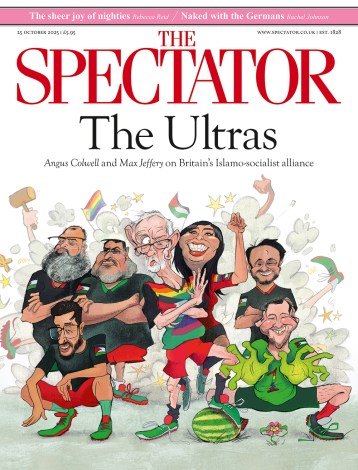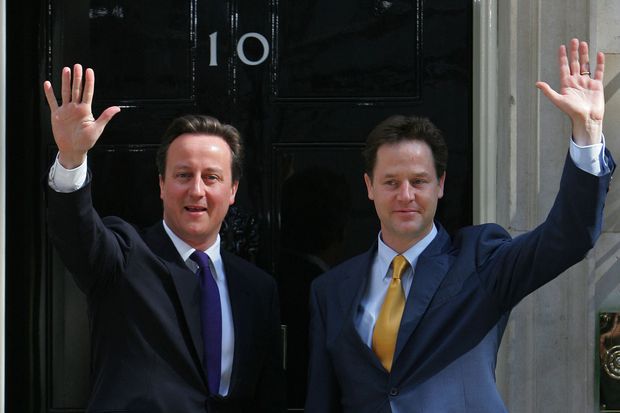To form a coalition, David Cameron had to give up the Prime Ministerial prerogative to determine when the election was called. But it is hard to imagine that, given the choice, he would have gone to the Palace any earlier than Monday. The Tories have merely drawn level with Labour in recent weeks and there hasn’t been a poll yet which points to him winning a majority.
This will be the most polled campaign in British history. On the day it started, depending on your choice of pollster, the Tories were four points ahead of Labour, four points behind or dead level. But one clear theme is emerging from this cacophony of data: a hung parliament is the most likely election result.
The polls suggested a hung parliament for most of the 2010 campaign. But they were not taken seriously. Many of us assumed that undecided voters would break late, and decisively, one way or the other. They didn’t.
This time round, the media is positively obsessed by hung parliament scenarios. Every party leader will be asked repeatedly who they would do a deal with, what their ‘red lines’ will be in any negotiations and whether they would prefer a full coalition to a vote-by-vote deal.
There is an element of fighting the last war in all of this. One Tory cabinet minister jokes that even if they do win a majority, the first question he’ll get on election night will still be about coalition. But the emphasis being put on a hung parliament could actually change how people vote.
Among voters who expect another hung parliament, support for Labour and the Tories is markedly lower. The British Election Study reveals that Labour and the Tories poll at 39 and 38 per cent respectively with those who think that one party will win a majority. But among those who reckon that no party will win outright, these votes shares fall to 29 and 28 per cent. The beneficiaries of their decline are the other parties. Support for Ukip goes from 11 to 15 per cent, the Liberal Democrats from 6 to 10 per cent, the Greens from 4 to 7 per cent and, most dramatically, the Scottish Nationalists from 2 to 7 per cent.
Those figures suggest that if voters think no one will win a majority, there’ll be more support for the minor parties. This matters because when voters start paying attention to this election campaign, they’ll realise that a hung parliament is by far the most likely result. The respected election forecaster Stephen Fisher of Oxford University puts the chances of a Labour majority at just 1 per cent and that of a Tory majority at 16 percent.
This scenario goes against the now conventional wisdom that a close election will see the other parties squeezed as Labour and the Tories persuade voters that the election is really a two-way choice.
Another reason to think that the Tories and Labour will find it hard to overwhelm the other parties is the broadcasting rules. Ofcom have ruled that Ukip and the Liberal Democrats must be treated as ‘major parties’ alongside the Tories and Labour. Ukip believe that this standing, and the additional coverage it will bring, will greatly enhance their position. Senior Tories fear that they are right; one normally level-headed member of Cameron’s inner circle furiously describes the decision to grant Ukip major-party status as ‘ridiculous’. The Liberal Democrats, meanwhile, calculate that they will as usual get a boost in the polls during the short campaign.
The Tories aim to turn all this talk of hung parliaments to their own advantage. They know that voters don’t like coalitions; the proportion preferring a coalition has dropped from 45 per cent to 29 per cent over the last five years. Almost two thirds of us want a single party government after the next election, according to the British Social Attitudes Survey. So the Tories are busy trying to say that a vote for anyone but them will lead to a mucky, uncertain result. They also think that the prospect of the Labour party having to rely on the support of the SNP in a hung parliament will send English voters into their protective embrace.
This Tory line of attack infuriates Labour. They protest that Ed Miliband has already ruled out a coalition with the SNP and that the nationalists have no bargaining power as they are already committed to preventing Cameron from forming another government. But as Alex Salmond told The Spectator last week, the SNP would look to extract concessions from Labour on a vote-by-vote basis. At the SNP conference last weekend, Nicola Sturgeon was explicit that SNP MPs would ‘force Labour’s hand and keep them honest’. She also declared, ‘We will use our influence in the House of Commons to force them to abandon the needless pain of Tory cuts.’
The SNP will keep beating this drum: it is a crucial part of their appeal in Scotland. South of the border, however, or once it has been through the Tory spin machine, it has a distinctly more menacing tone: a threat to force Labour to increase spending and dish out various goodies to Scotland. The Tories believe that English voters, riled by the demands of the nationalists and the fact that more money is spent on public services (per capita) in Scotland than England, will take fright at this prospect and turn to them to keep Salmond and his ilk out.
What makes this election so exciting is that no one can predict the result with any confidence. One of the things compounding the uncertainty is that we can’t be sure how voters react to uncertainty. Will they turn to the main parties in the hope of a decisive result or will they be more inclined to vote for a minor party in the belief that they’ll have influence in a hung parliament? The Tories are praying it’s the former.
SPECTATOR.CO.UK/COFFEEHOUSE
Hourly updates from parliament and beyond.







Comments